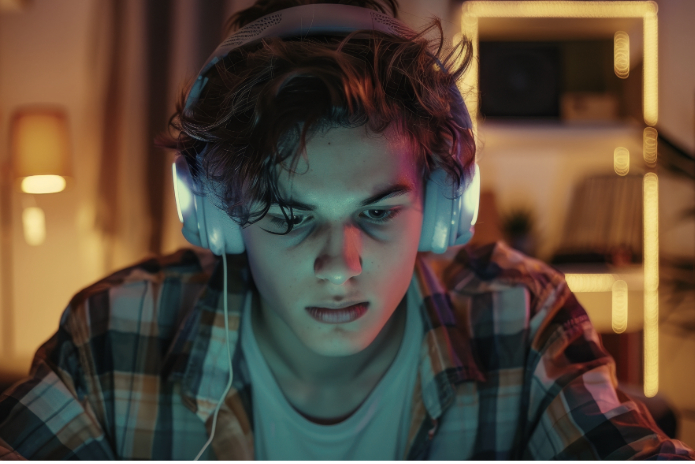Within the universe of The Lord of the Rings, the ‘Eye of Sauron’ symbolizes constant surveillance, absolute power, and the oppression exerted by Sauron over all of Middle-earth. It is described as a flaming, all-seeing eye, representing the villain’s menacing presence and desire for total control. All researchers and professionals who work with and on the internet agree that much has changed since it became ubiquitous among adults, children, and adolescents. But they diverge into two camps: are smartphones and social media the Eye of Sauron simply by existing, requiring us to regulate their use, or does any technology have an impact on our culture, and could this impact make behavior fundamentally dysfunctional? In this article, I attempt to share both arguments and give voice to a less popular thesis: technology is agnostic—what we do (or don’t do) with it is what matters.
Lately, especially after the publication of Jonathan Haidt’s book ‘The Anxious Generation,’ alarmism has spread among parents and educators, who have found a culprit for the woes plaguing Generation Z (1997–2009) and Alpha (2010–2024): smartphones. For Haidt, the mere presence of smartphones in a place, coupled with indiscriminate use of social media, is responsible for the rise in psychiatric illnesses. To support his conclusions, he cites data from the American College Health Association: since 2008, the number of teenagers diagnosed with some form of mental illness has risen from 20% to 45%.
As a researcher and professor in the digital world, I view these numbers with suspicion because children throughout history have grown up under greater threats than the presence of a smartphone. And we don’t even need to look to the past to find such children: after the October 7, 2023, attacks in Israel, among children and adolescents who had direct contact, the prevalence of mental disorders increased from 17% to 30%.
It worries me that, in Brazil and worldwide, we are creating laws aimed at banning smartphone access based on a moral panic that apparently doesn’t withstand minimal scrutiny. In any case, the digital world has had an impact on our lives—that’s undeniable—but allow me to propose an alternative hypothesis: it is our culture, aided by smartphones, that is changing adolescent behavior.
Smartphones, which surprisingly have existed since 1994, only became popular in 2007 with the launch of the first iPhone. If they’ve been around for so long, why are adolescents only now feeling their impact? Haidt blames social media and fast mobile internet. Other researchers, like Italian Alberto Acerbi, and I have a different opinion: it’s the culture, stupid!
With smartphones, anyone has become a journalist or, in current jargon, a ‘content creator.’ This means that no matter where we are or what we do, there will always be a wicked, red Eye of Sauron watching us. That would be fine if surveillance were the only problem. The issue is that this all-seeing eye also cancels, humiliates, and shames.
Imagine a teenager trying to win over their first girlfriend: there’s always the risk of rejection. That’s normal, but today, someone who tries to approach another person, online or in real life, risks being humiliated and canceled in the public square of the internet. A simple screenshot can make an 18-year-old boy the subject of mockery worldwide.
The best content produced by this cancel-craze brought to light by the internet is Monica Lewinsky’s TED Talk. Yes, that one, “I did not have sex with that woman”. In it, the most hated woman of 1997 talks not only about her own experience but also about others who were metaphorically lynched in the digital public square. And the solution? A new culture—one of tolerance and grace on the internet, where things like the aforementioned screenshot would be ignored by us, a behavior déclassé, vulgar.
And the mental health crisis? Are teenagers really sicker? According to the World Economic Forum, adolescents are delaying their entry into adulthood.
My hypothesis is that, out of fear of humiliation and cancellation, teenagers aren’t getting driver’s licenses, aren’t going out in public, and are remaining infantilized for longer. The prospect of stepping into the world—whether digital or real—presents a real social risk for which their minds are unprepared. In truth, no one is.
What surprises me most about the prohibitionist frenzy, both from Haidt and from Brazilian and foreign legislators who have elected smartphones as the source of all evils, is that Haidt has written repeatedly about how a culture that treats public humiliation as a hobby cannot be healthy. He calls this scheme, present in cognitive-behavioral therapy theory, ‘mind-reading,’ where we assume the worst intentions of others.
To overcome this behavior—this culture we have today (which I must agree is highly dysfunctional)—Haidt himself suggests adopting a more generous stance, assuming good intentions in others’ actions and words. This approach helps reduce unnecessary conflict and promotes healthier interactions, especially in polarized environments. By challenging these automatic assumptions, we can transform the Eye of Sauron into more empathetic and tolerant eyes, fostering more rational communication—both online and in real life—without needing to prohibit anything.
(*) Lilian Carvalho holds a PhD in Marketing and is the coordinator of the Center for Digital Marketing Studies at FGV/EAESP and founder of Método Lumière


